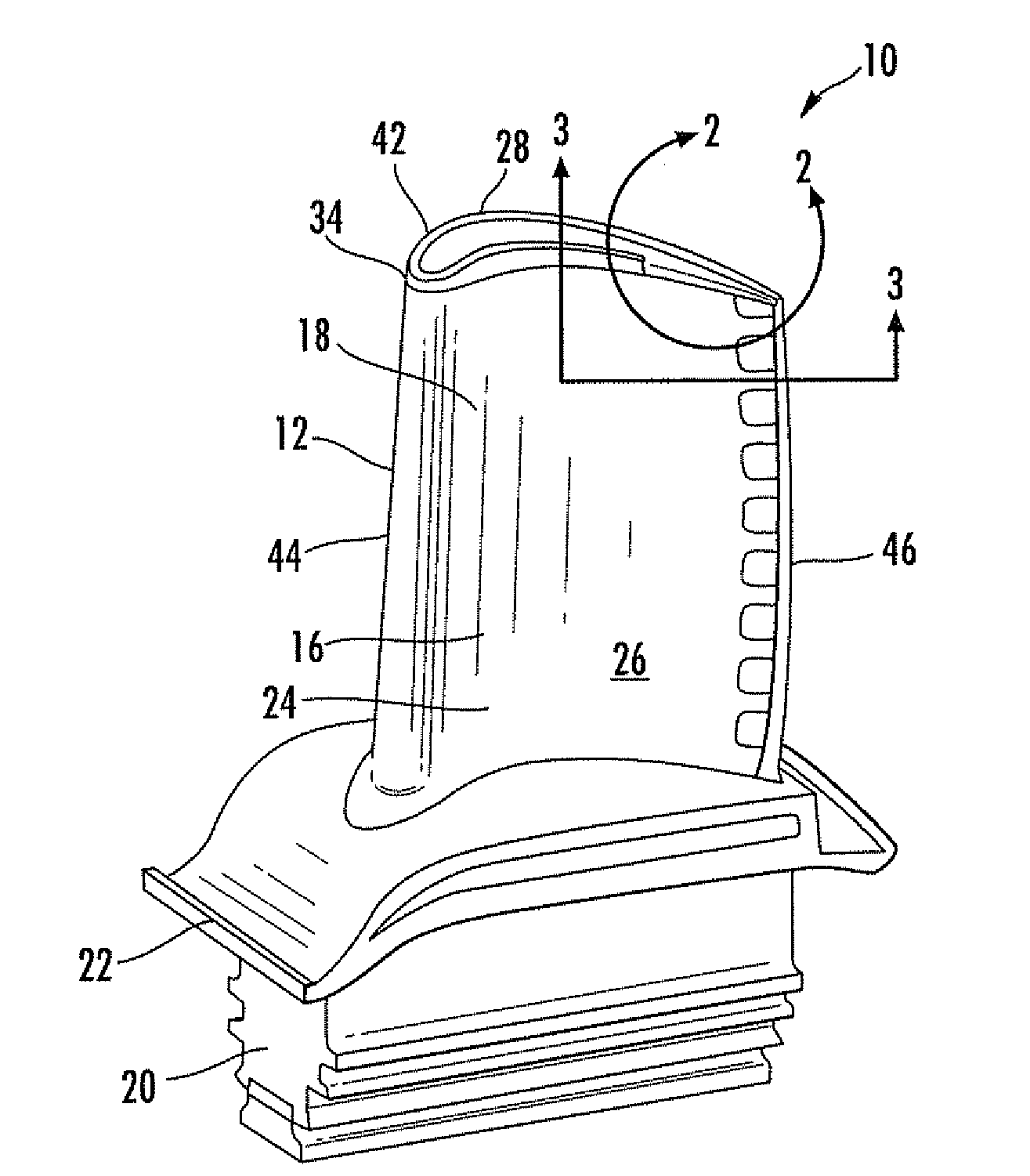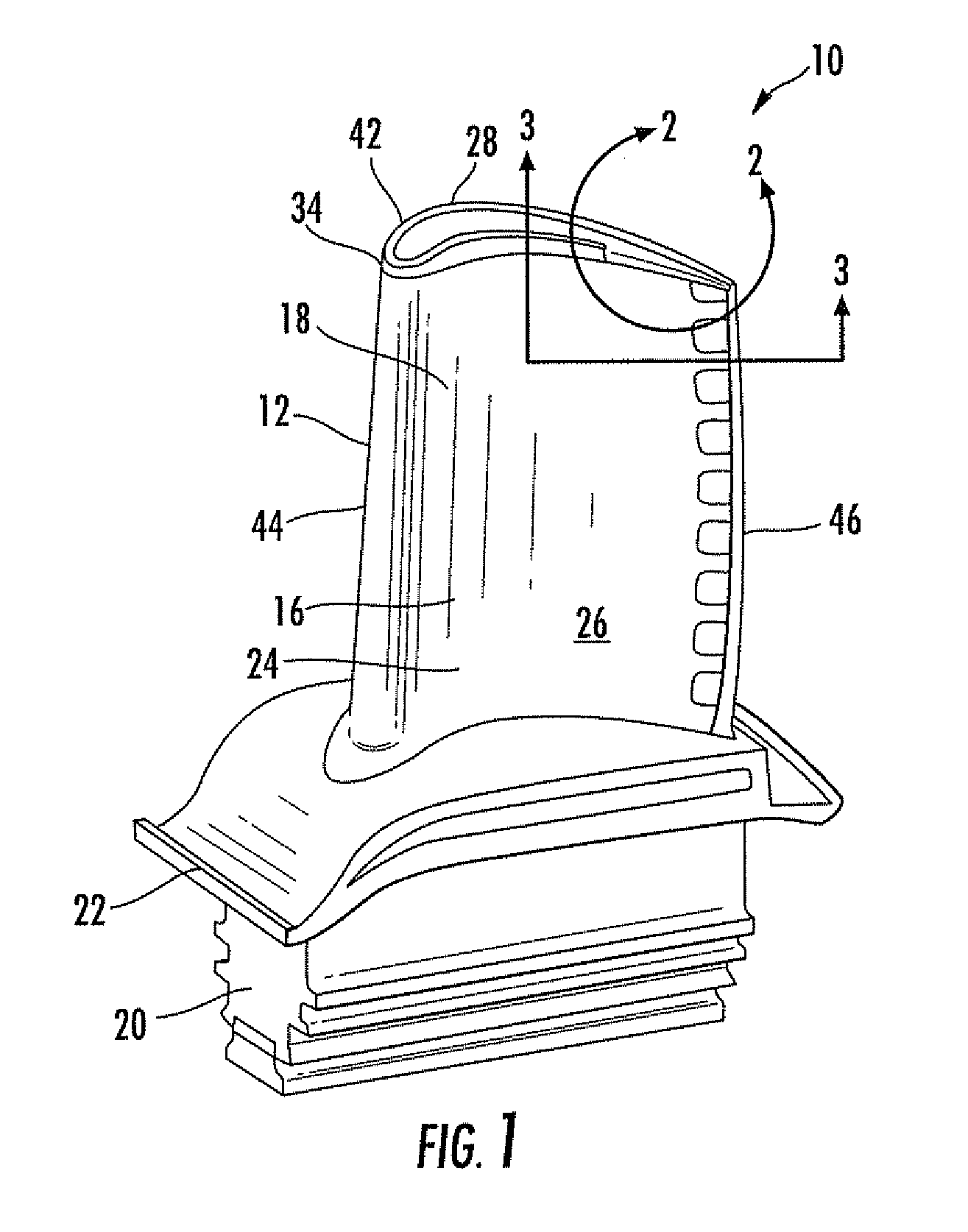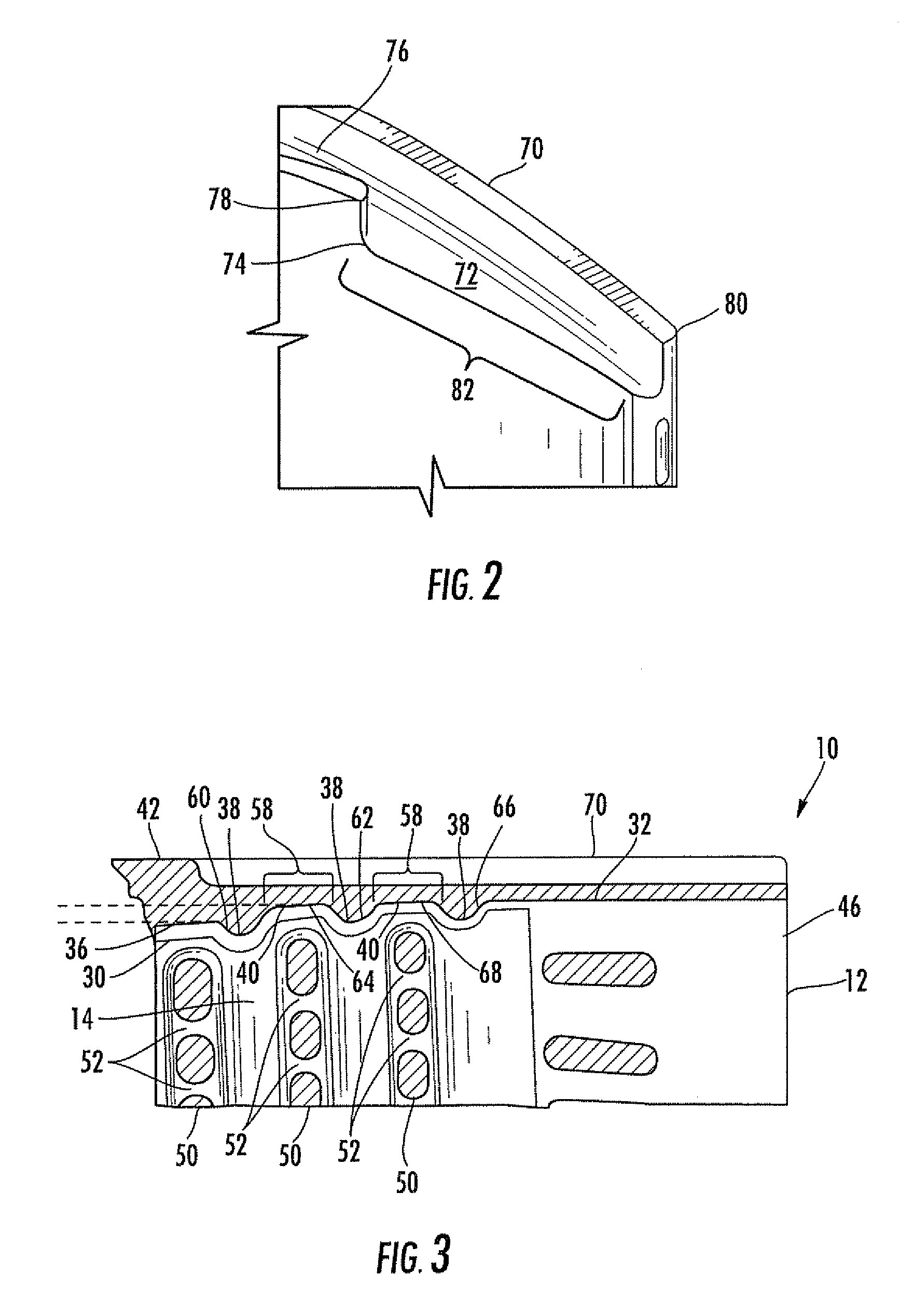Turbine Blade Tip Cooling System
a cooling system and turbine blade technology, applied in the field of turbine blades, can solve the problems of reducing the useful life of the turbine blade, the likelihood of failure, and localized hot spots, and achieve the effect of facilitating the cooling of the blade tip
- Summary
- Abstract
- Description
- Claims
- Application Information
AI Technical Summary
Benefits of technology
Problems solved by technology
Method used
Image
Examples
Embodiment Construction
[0017]As shown in FIGS. 1-3, this invention is directed to a turbine blade cooling system 10 for turbine blades 12 used in turbine engines. In particular, the turbine blade cooling system 10 includes a cavity 14, as shown in FIGS. 2 and 3, positioned between two or more walls forming a housing 16 of the turbine blade 12. The cooling system 10 may include at least one elongated tip cooling chamber 30 forming a portion of the cooling system 10 and at least partially defined by a tip wall 32 proximate to the first end 34. An inner surface 36 of the tip wall 32 may include a plurality of curved bumper protrusions 38 extending from the inner surface 36 radially inward toward the root 20. Recessed tip slots 40 may be positioned between the protrusions 38, which reduces the thickness of the outer wall 24 at the first end 34, thereby making it easier to cool the tip 42 of the blade 12.
[0018]As shown in FIG. 1, the turbine blade 12 may be formed from a generally elongated blade 18 coupled to...
PUM
 Login to View More
Login to View More Abstract
Description
Claims
Application Information
 Login to View More
Login to View More - R&D
- Intellectual Property
- Life Sciences
- Materials
- Tech Scout
- Unparalleled Data Quality
- Higher Quality Content
- 60% Fewer Hallucinations
Browse by: Latest US Patents, China's latest patents, Technical Efficacy Thesaurus, Application Domain, Technology Topic, Popular Technical Reports.
© 2025 PatSnap. All rights reserved.Legal|Privacy policy|Modern Slavery Act Transparency Statement|Sitemap|About US| Contact US: help@patsnap.com



